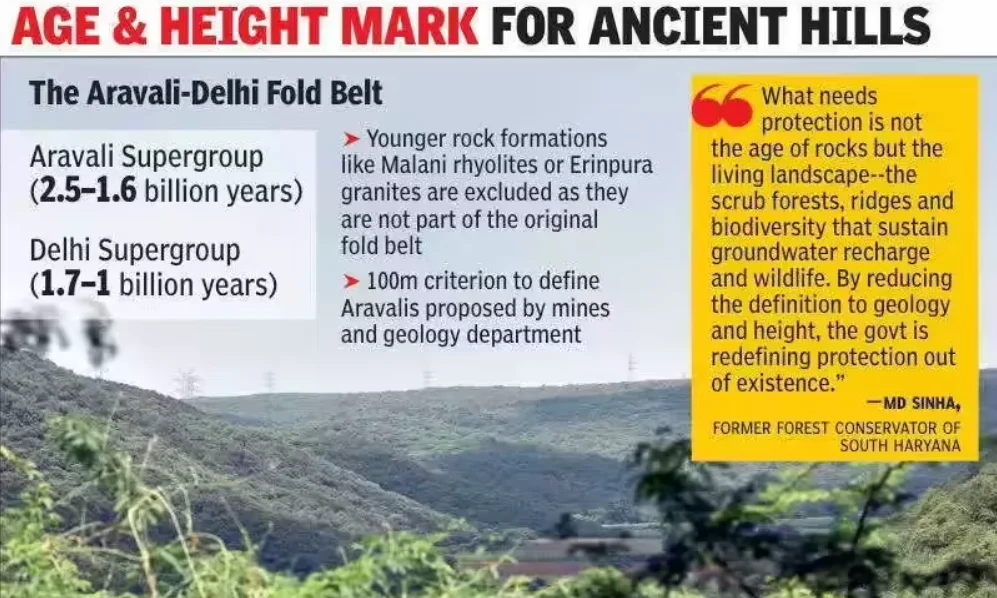Haryana
Haryana Revises Aravali Definition
- 08 Oct 2025
- 4 min read
Why in News?
The Haryana government has redefined 'Aravali hills and ranges' by adding minimum geological age and height criteria, raising concerns about reduced protection and its impact on conservation.
Key Points
- About: The effort to define the Aravalis commenced in 2024, following the Supreme Court's directive to the Union Environment Ministry and the four affected states—Delhi, Rajasthan, Haryana, and Gujarat—to create a unified definition.
- Haryana’s Definition: On 4th October 2025, the Department of Geology and Mines in Haryana finalised a new definition for the Aravali Hills, limiting it to hills rising more than 100 meters above the surrounding land and composed of rocks older than a billion years.
- The 100-metre elevation benchmark aligns with Rajasthan's standard, but while Rajasthan's classification focuses on mining, Haryana's is intended for conservation.
- Haryana’s new parameters, labelled as "scientifically measurable" and "field-verifiable" in line with Rajasthan and Geological Survey of India (GSI) standards, are seen by experts as more of a policy shift than a technical correction.
- Expert Concerns: Experts and environmentalists are concerned that the new definition may reduce the protection scope, especially in regions like Gurgaon, Faridabad, and Nuh, where the terrain doesn't meet the 100m elevation requirement, potentially allowing development in parts of Haryana's forested Aravalis.
- Environmentalists argue that the protection should focus more on preserving the living landscape, including scrub forests, biodiversity, and groundwater recharge, rather than restricting it based on the age of the rocks.
- GSI’s Stance: The Geological Survey of India (GSI) had flagged Haryana's previous draft, questioning the inclusion of much older Archean formations, and emphasised more scientific accuracy in defining the Aravalis.
- The new definition restricts the Aravalis to rocks of the Aravali and Delhi supergroups (Paleoproterozoic and Mesoproterozoic), excluding younger Neoproterozoic intrusives like Erinpura granite and Malani rhyolite.
- The geology department's note reveals that intrusive granite constitutes less than 3% of Haryana's Aravali terrain, with the Ajabgarh and Alwar groups predominating the region.
- Supreme Court’s Role: The Supreme Court had earlier called for a uniform definition of the Aravalis across Delhi, Rajasthan, Haryana, and Gujarat, aiming to standardise regulations for these areas.
- The proposed revision could conflict with prior court rulings, particularly Rajasthan's 2011-12 rejection of a height-based criterion, and may narrow the definition of "Aravali hills and ranges," potentially reducing protected areas and allowing reclassification for development.
- Ecological Importance of Aravalis: The Aravalis, one of the world's oldest hill ranges, are essential in preventing desertification in the Delhi-NCR region by maintaining ecological balance.
- The Aravali-Delhi fold belt stretches from Gujarat to Delhi, consisting mainly of quartzites, schists, phyllites, dolomites, and marbles, playing a key role in controlling the expansion of the Thar desert.







